The Scotch whisky industry is firmly built upon tradition. A visit to any distillery in Scotland will be rife with establishment dates and distillery workers’ lineages and recipes handed down from generation to generation. But what happens when a distillery is mothballed, left to sit quietly for years until an enterprising individual comes to perform a resurrection? Are the distillery’s previous life and recipes remembered and rebooted or is it an opportunity for a second, different life? Many in the industry believe there is a right, almost dogmatic, way to make whisky, that the past should dictate the future.
Try telling that to Jim McEwan, the master blender and distillery manager at Bruichladdich Distillery. He’d likely grace you with one of his thousand-mile, ice-cold glares.
Jim is a man of vision. When Bruichladdich (pronounced brook-LAD-dee) reopened in 2001 after seven silent years, investors Mark Reynier and Murray McDavid hired over Jim from Bowmore Distillery where he had spent the previous 38 years working every job from cooper to stillman. His first act was to dismantle and reassemble the late-Victorian era distillery to ensure the revitalized distillery would work to his specifications. Instead of trashing the equipment, Jim retained the original Victorian décor including Scotland’s oldest operational still (circa 1881) and an antique lauter mash tun. The past ten years have been a chronicle of Jim’s irreverent approach to Scotch whisky, an often confounding dance with fellow distillers and consumers, and moments of unparalleled distilling genius.
I knew none of this when I arrived to the tiny town of Bruichladdich on Islay. In fact, I was one of those consumers put off by the fifteen varieties of Bruichladdich I would see at the local liquor store. The question was always: where do I start?? I like to think I’m a bit wiser now. I understand that “new” distilleries can’t sit around for ten years before making a profit; they need to roll out various bottlings. In Bruichladdich’s case, they were lucky to have a lot of whisky from the previous running still aging in warehouses that they could market.
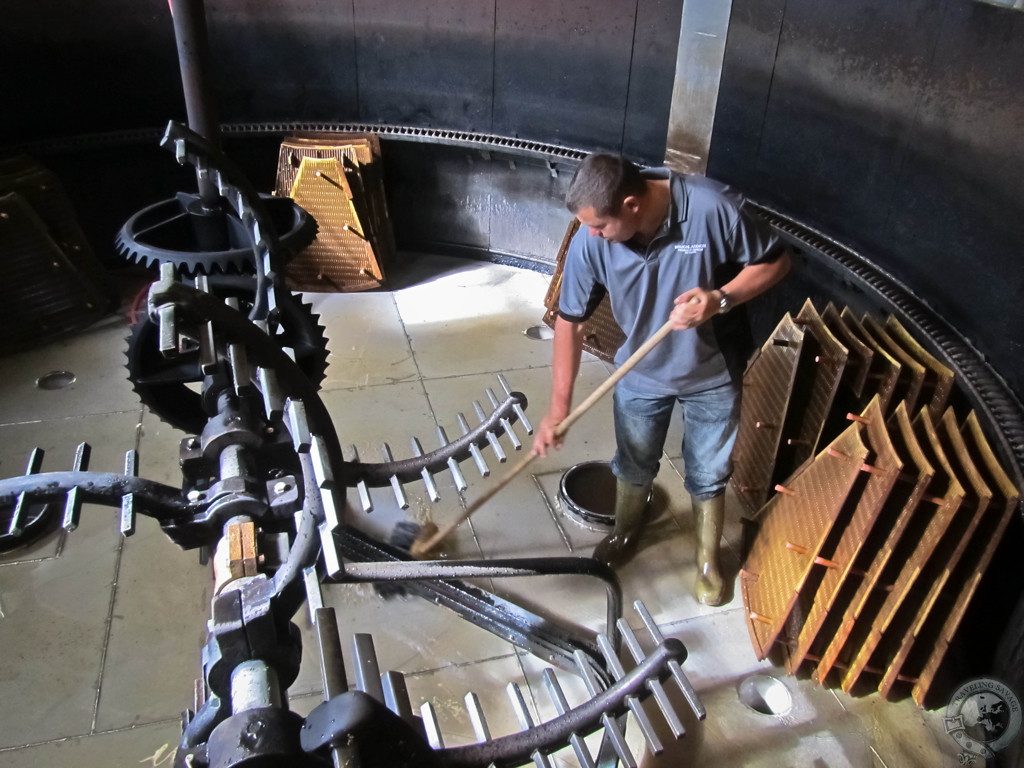
As usual, a gale is blowing when I duck into the Bruichladdich shop and visitor’s center. It’s a cozy, low-ceilinged affair where they hand you a dram of your choice (and there are some good choices) while you wait for the tour. Eventually, Jim arrives; it’s busy around here as they prepare for their 10th anniversary since reopening. He’s stick thin and on first impression a bit reserved. It doesn’t take long for me to realize he’s a lot like the barrels he cherishes: a bit rough on the outside but filled with a heart of gold.
We hop into a van with another visiting malt maniac, a young distiller named Sam from Victoria Valley in Australia, and drive up to one of Bruichladdich’s warehouses. Jim guides us through columns of stacked barrels – his children – as Sam and I pepper him with questions about stacking strategies and barrel woods. Jim is a cooper at heart and he seems most at home here in the heavily perfumed air of the warehouse. On the way out, he helps a tour guide valinch some whisky out of a barrel for tasting. He hands me a thimble full – it’s rich and fruity with a big finish.
Sam and I walk back to the distillery while Jim finishes up some tasks in the warehouse. We meet up again in the mash house where one of Bruichladdich’s 50 employees is cleaning out that antique lauter mash tun. Bruichladdich is an anomaly; Mega-corporation-owned distilleries like Caol Ila are modernizing so that one person can run the entire distillery while Bruichladdich, once the only independent distillery on Islay (now there’s Kilchoman, too), is growing their workforce. Fifty distillery employees is a staggering number these days, and Bruichladdich is now the largest employer on Islay. All of Bruichladdich’s marketing, bottling, distilling, and shipping are done right here.
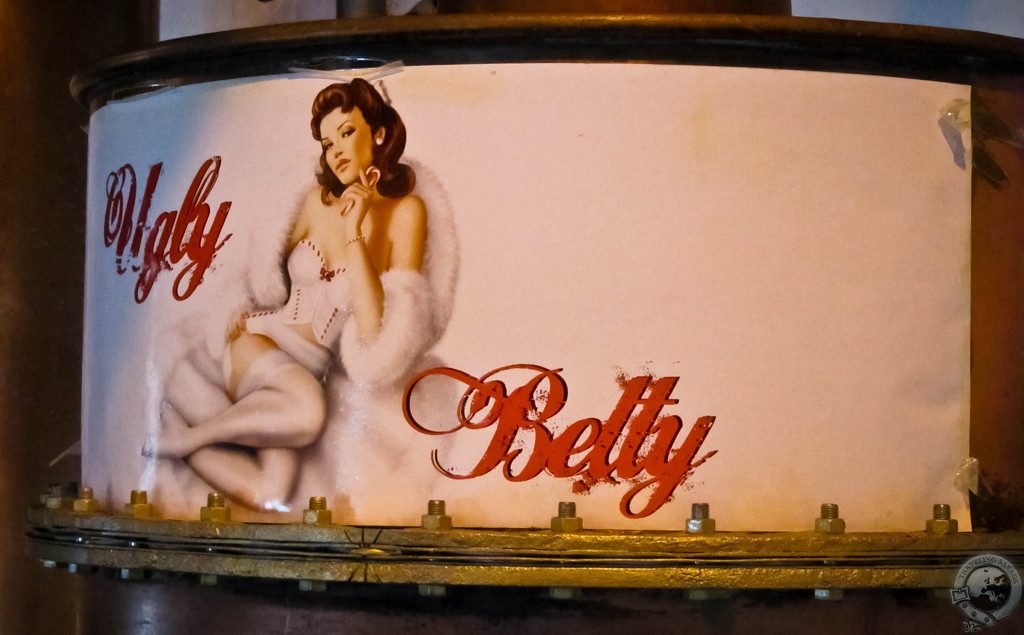
In the stillhouse we get a look at that Victorian still. Most stills need to be replaced every 25-50 years as the copper gets too thin. This behemoth from 1881 is still going strong because it was crafted with such thick copper. It’s here that we also get a look at Bruichladdich’s newest addition: Ugly Betty. Ugly Betty is an old Lomond pot still Jim rescued from England that he refurbished for gin-making. GIN! Yes, Bruichladdich does indeed make a gin they call The Botanist, which is infused with botanicals mostly native to Islay. I had a taste in the visitor center and can say without hesitation that it’s the smoothest gin I’ve ever had. If Bruichladdich isn’t careful, demand for The Botanist just might take over the distillery.
We pass through Bruichladdich’s bottling and packaging area and I get a unique look at processes that have been mostly relegated to dedicated plants on mainland Scotland. Jim talks to everyone. There’s a family feeling to the entire operation, and that always means good things for the end product.
Jim winds up our tour with a final stop in the “Aladdin’s Cave,” a warehouse brimming with liquid gold from all over Scotland. You see, Jim’s also a whisky broker. He’ll buy casks from other distilleries and let them sit or improve them as needed before selling them as whisky from their parent distilleries. The place looks like an airplane hangar and the tasting I’m about to go on is unparalleled thus far in my life.
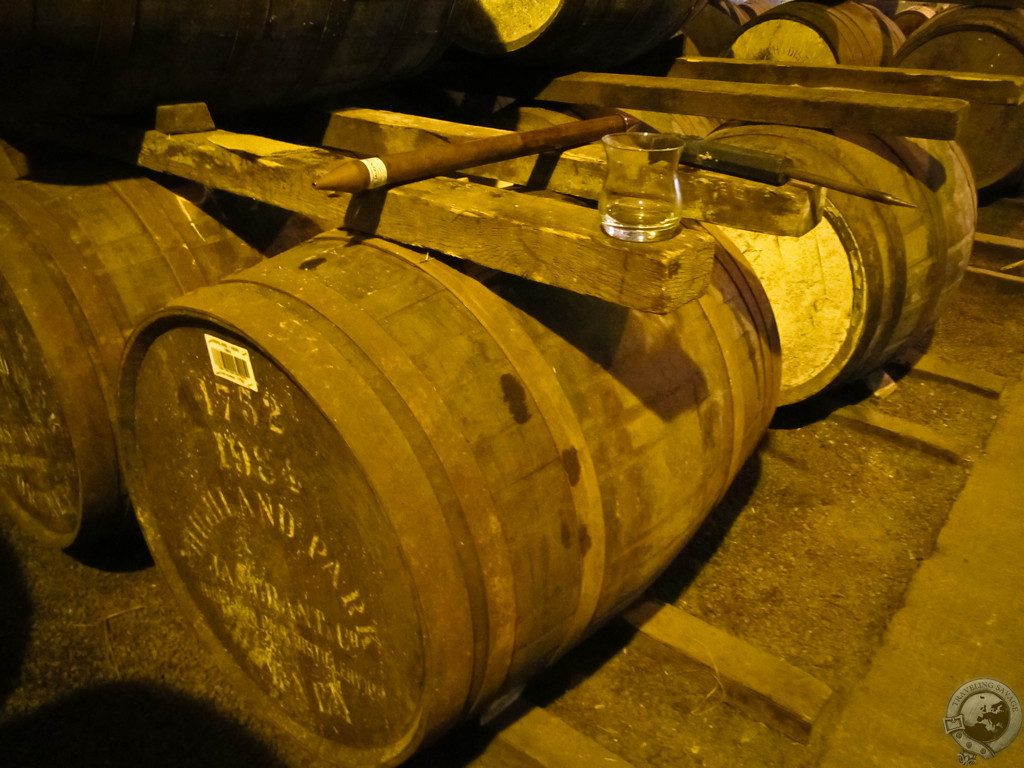
Jim saunters among the barrels with a bung remover. He stops at a 1984 Highland Park – Sam’s birth year – and siphons out drams for us. The nose is a huge bloom of Sherry sweetness, red currant, a waft of burning peat, and toffee. Promise is fulfilled on the palate where the same notes are present in addition to a dry oakiness and something like butter on the finish. Rich, sweet, incredible. Next, he fills up our nosing glasses with a 1994 Mortlach. I crushed on Mortlach on my last trip but this one’s a bit different. The distinctive robust “meatiness” is scaled back, and citrus and vanilla and honey interplay on the nose. The taste brings out a pepperiness with grapefruit and chilis and a long, dry finish. I stare longingly at the barrel.
Jim dips his finger in each dram and gives them a taste. His body slumps and he makes a noise of pleasure – it’s apparent he loves what he does. He hands us a 1976 Jura that is simply shattering: there’s a dusty library, pearls of honey and toffee glistening, and a waft of damp smoke beneath the eaves of a thatched roof. Life-changing whisky. The coup de grace is a trio of Bruichladdich’s own, a 1992 Bruichladdich aged in Calvados, their quadruple-distilled X4, and a 3 Year Octomore. Here is evident Jim’s rude genius. He is not afraid to forget the past in favor of brilliant innovation. The X4 is 92% ABV and he gives us specific instructions for drinking it. Smooth, sweet, delicious, and it still has another 70 years of aging in front it. The Octomore is the color of shoe leather at only three years old, and it’s also the most heavily peated whisky on the planet. It’s deliciously complex and somehow not overly smoky.
Bruichladdich is all about range, about stretching our definition of single malt Scotch whisky. Jim hasn’t forsaken Scotch’s glorious past – in fact, Bruichladdich’s new core dram the Laddie Ten was just released – but he isn’t bound by the tethers of the past either. Just give Bruichladdich’s X4, Octomore, or Organic whiskies a shot. And don’t tell Jim what he can’t do. You will be wrong.
Disclosure: I arranged the visit to Bruichladdich. The personal tour and complementary drams were kindly provided by Jim and the Bruichladdich staff.

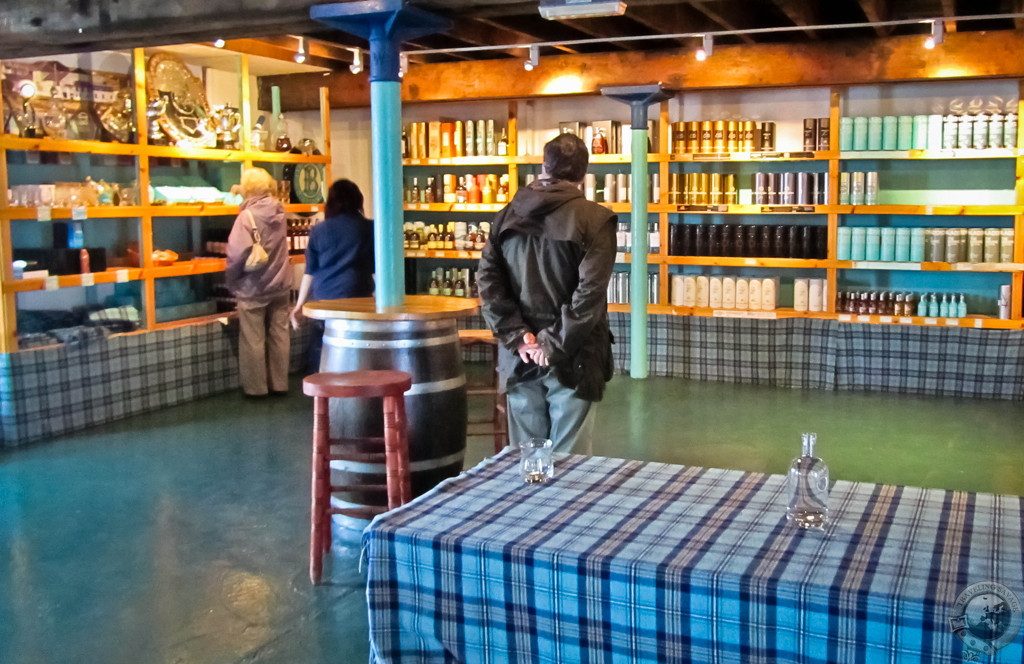
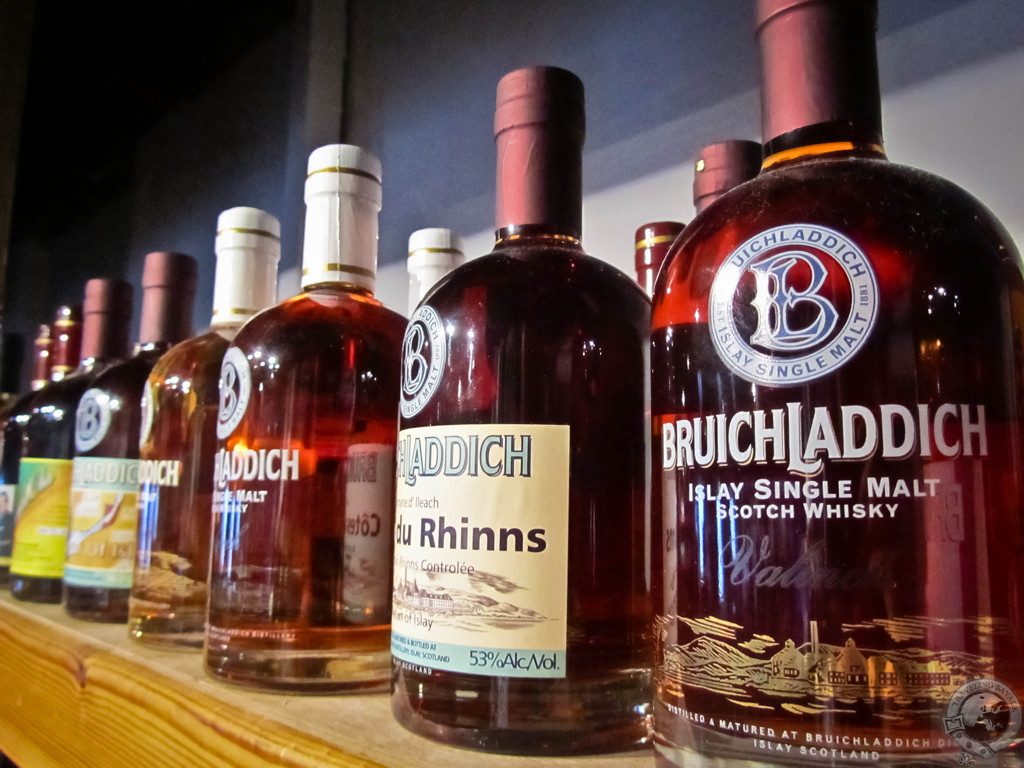
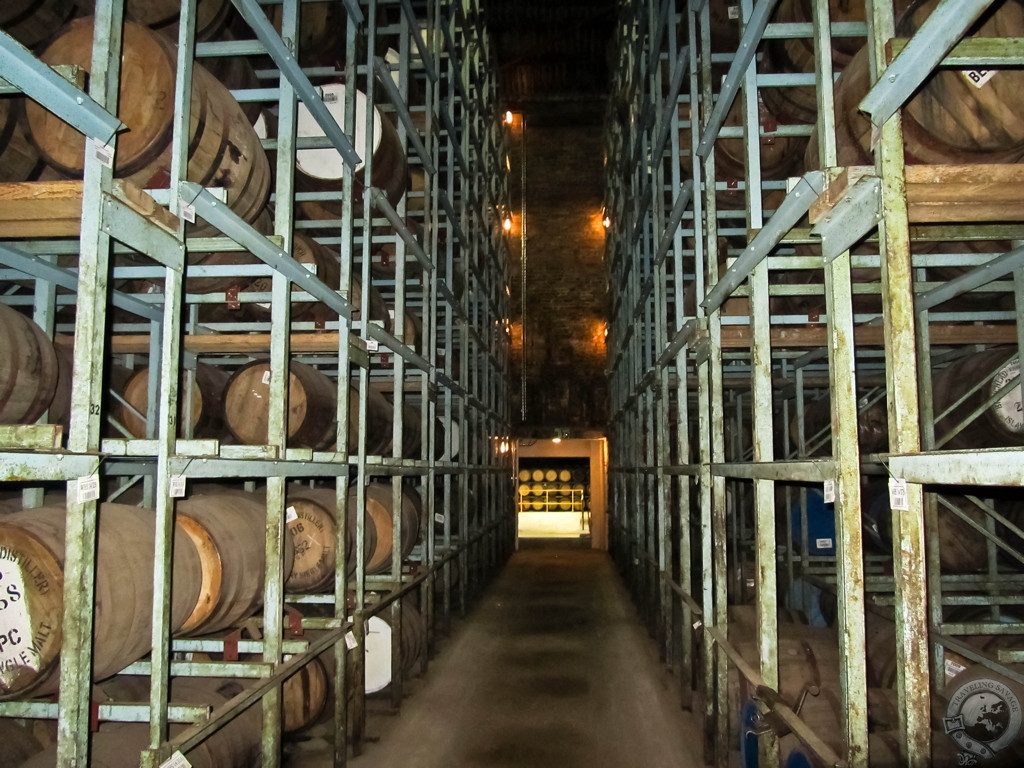
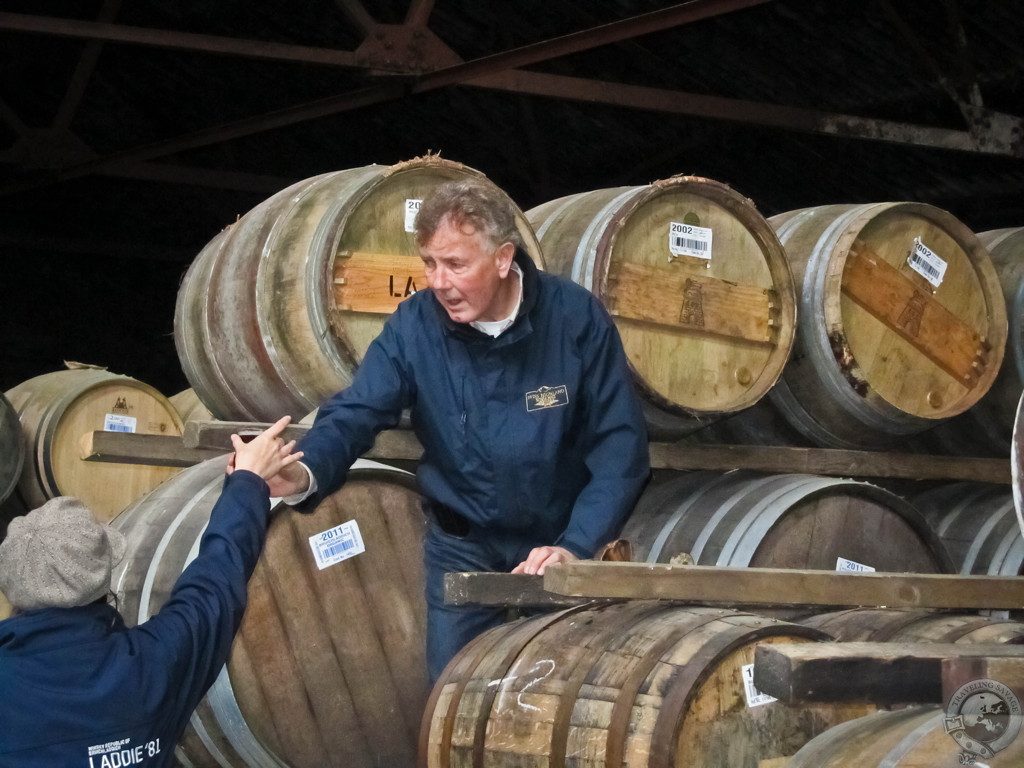
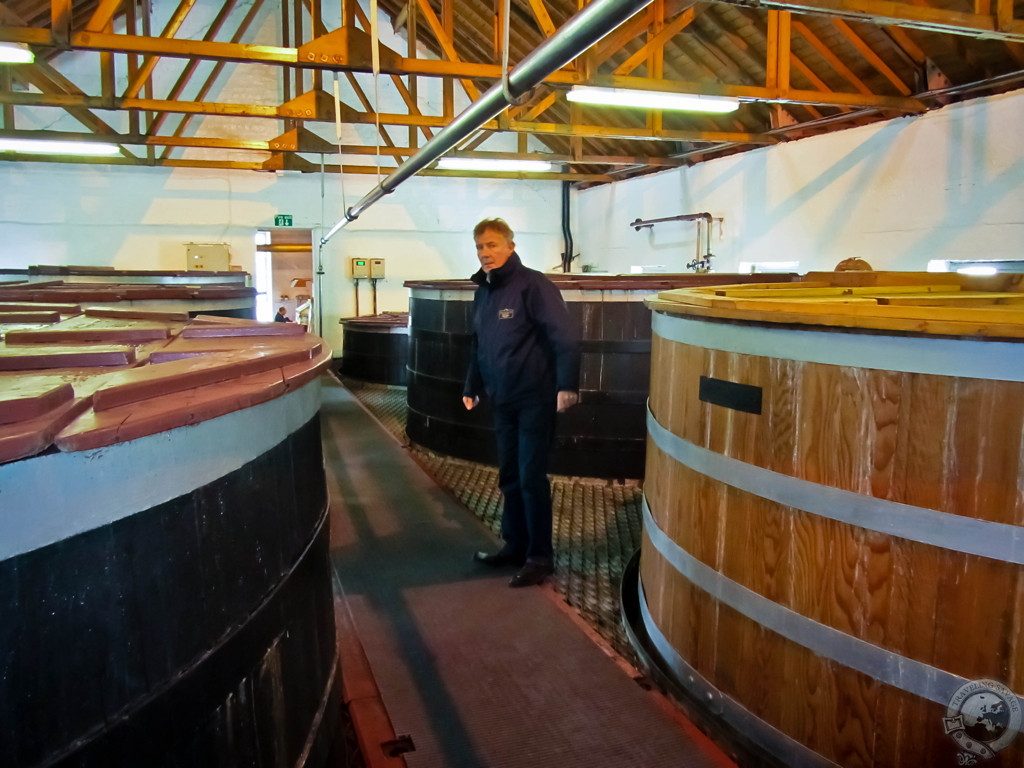
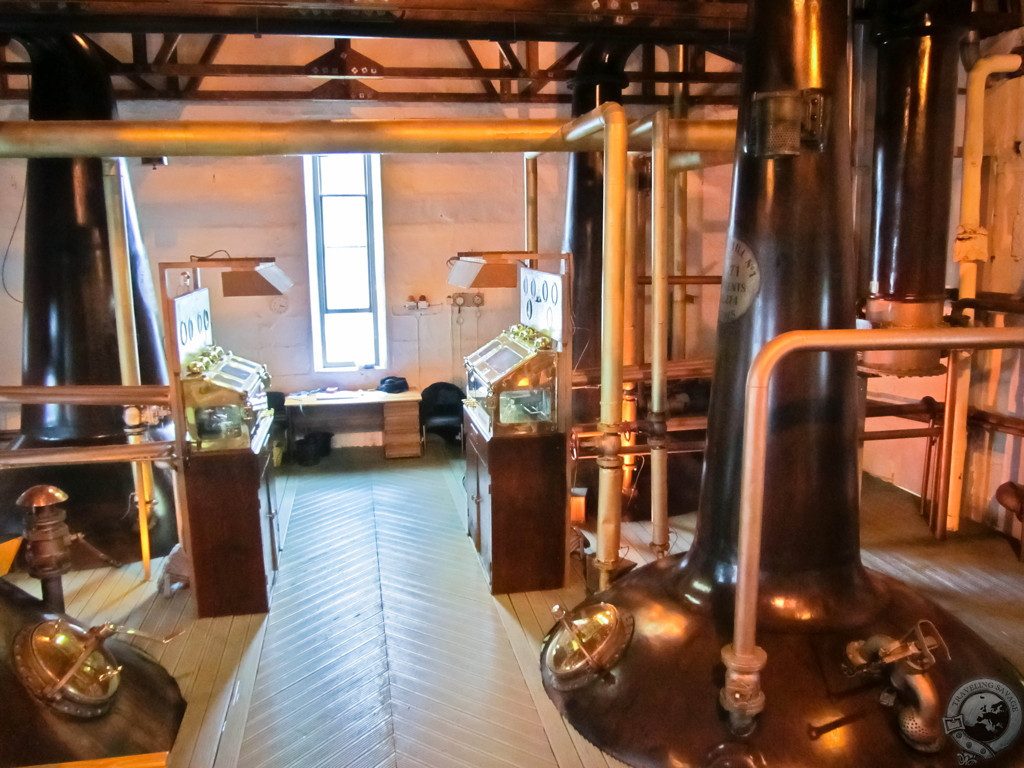
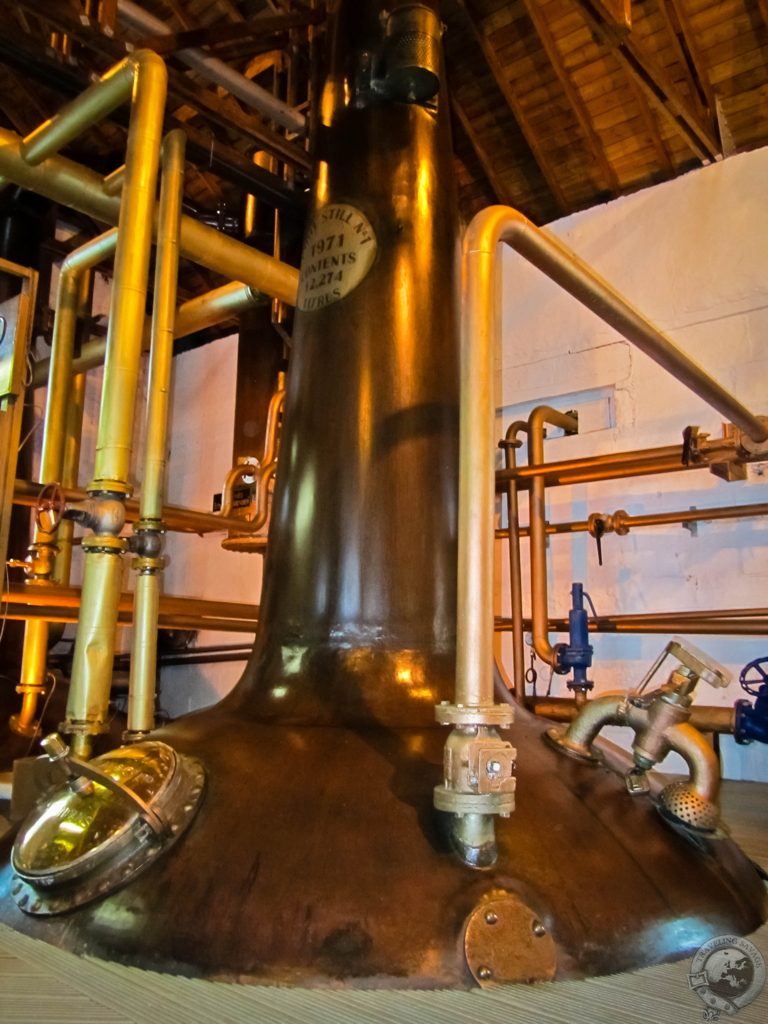
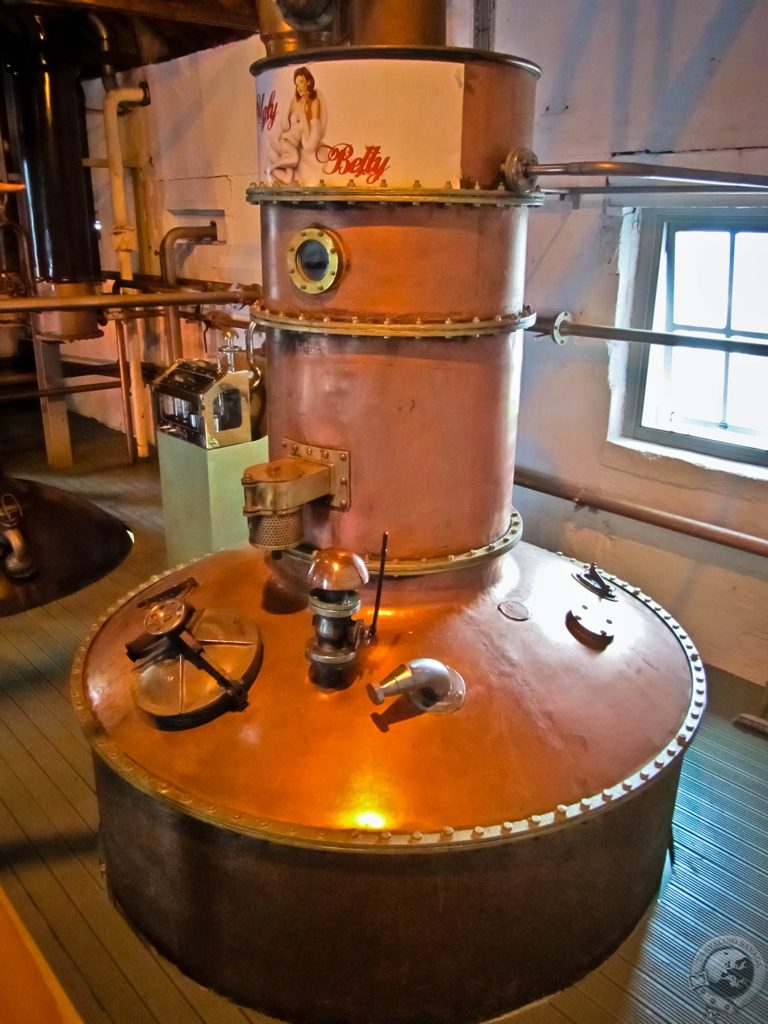
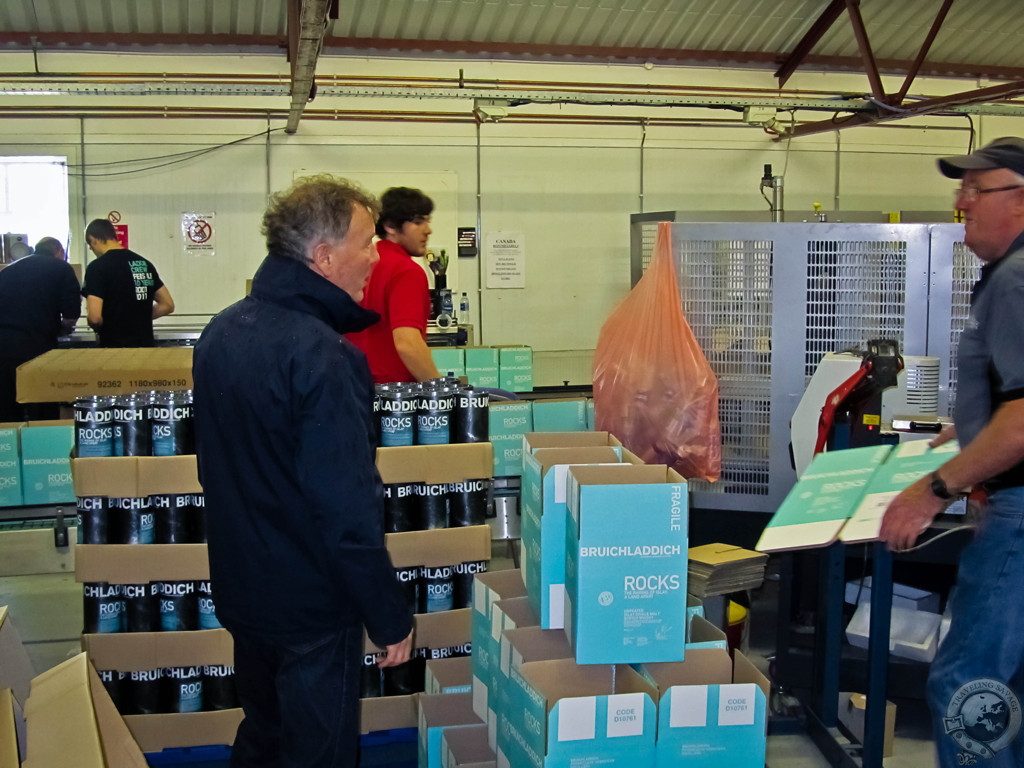
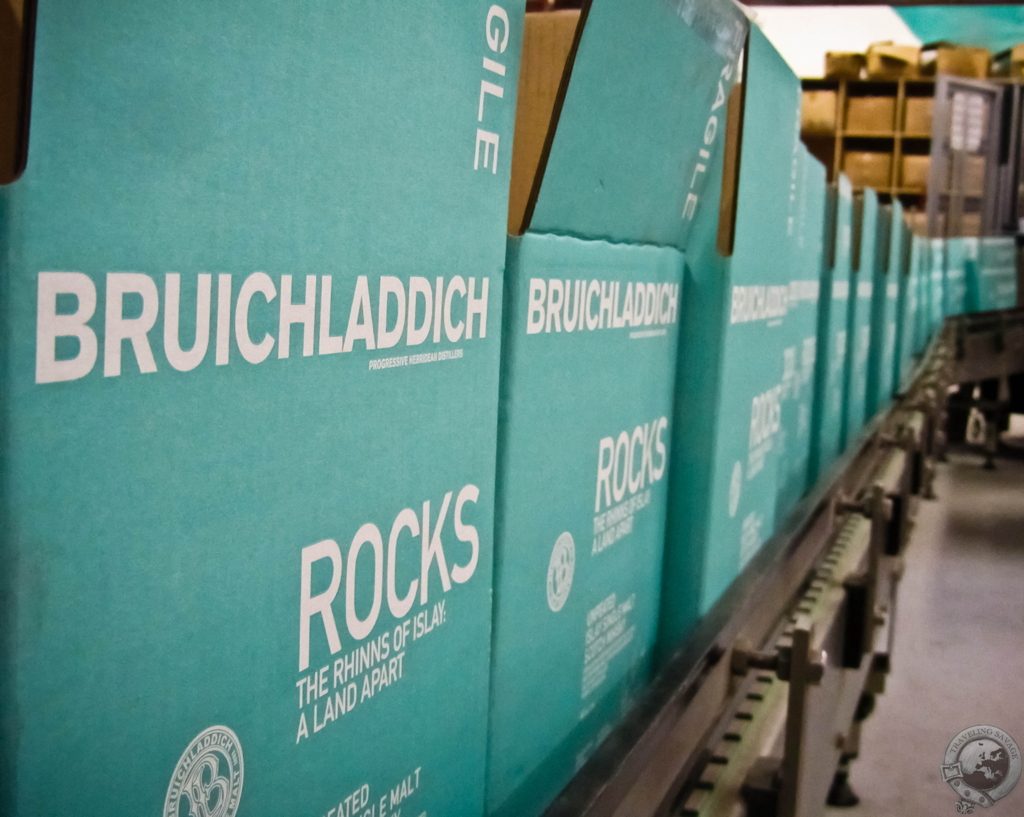
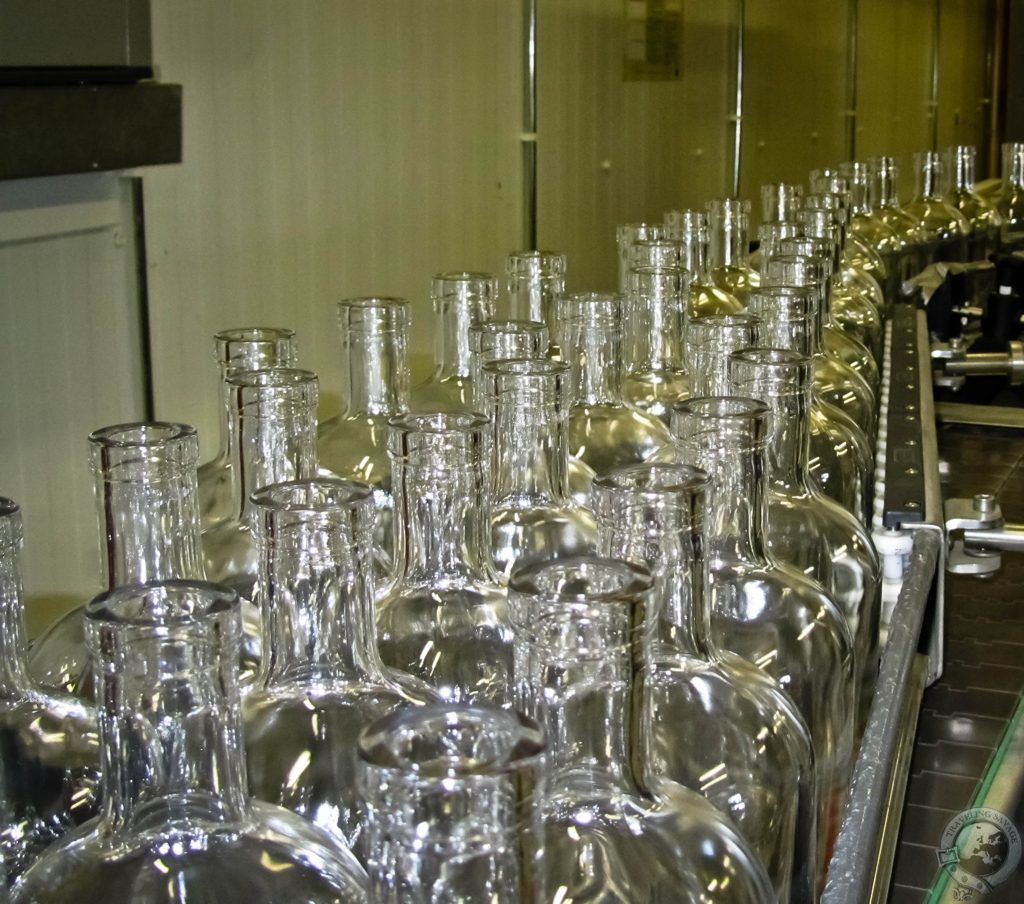
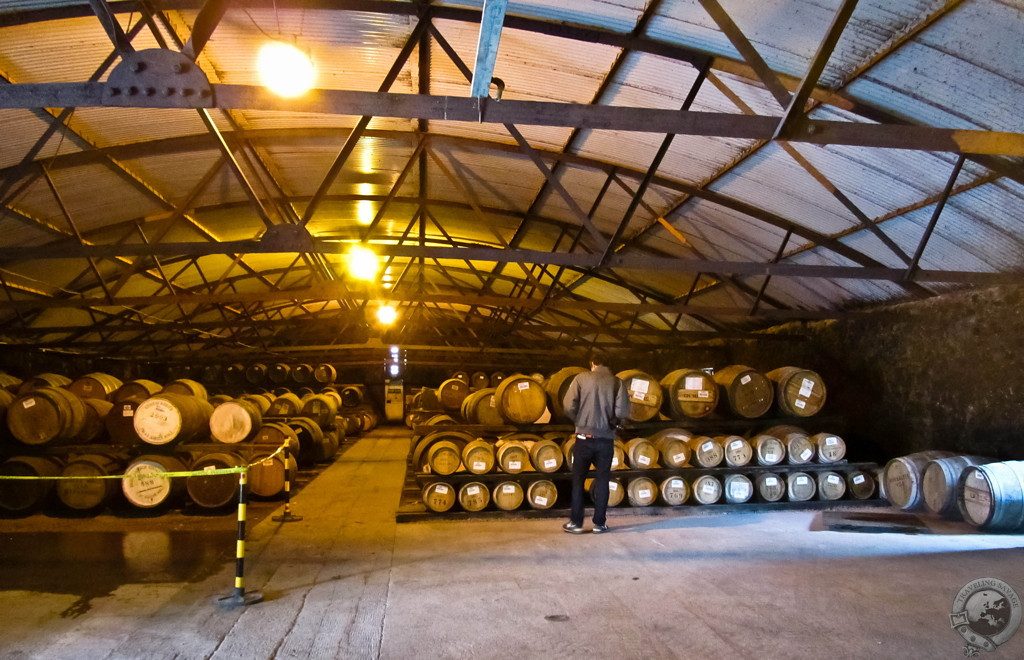
Great job describing the distillery and it’s people and whiskies. Makes me want to be there.
i want to be there, too. and i do love gin and tonic. more, please!!
I’m a fan of Bruchladdich, this makes me want to visit the distillery. I just tried the Botanist as well, very creamy and smooth. Yummy!
The Botanist is an excellent gin. I think it’s just now making its way to the States.